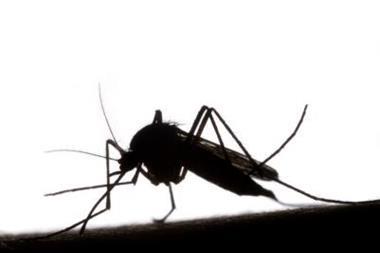Over 350 people die each year in the UK through work-related deaths. Some industries by their very nature are more dangerous than others, but the Health and Safety Executive (HSE) considers that 70% of these deaths are preventable.
In 1998 a protocol was agreed between the Crown Prosecution Service (CPS), HSE and the Association of Chief Police Officers setting out the principles for effective liaison between them where there is a suspected case of corporate manslaughter. The revised protocol published in 2003, Work Related Deaths: A Protocol for Liaison includes local authorities and seems to be working well. It covers all stages from initial action through the investigation stage and then on to any prosecution.
The key features include:
- an appropriate decision concerning prosecution will be based on a sound investigation of the circumstances surrounding work-related deaths
- the police will conduct an investigation where there is an indication of a serious criminal offence. The HSE, local authority or other enforcing authority will investigate H&SAW offences
- there will be joint investigations save in exceptional cases, and effective liaison and cooperation between investigating parties
- a decision to prosecute will be coordinated and timely
- the bereaved and witnesses will be kept suitably informed.
The prosecution rate is bound to increase, as the authorities will be keen to test the new provisions. Respected commentators suggest that there may be a ten-fold increase. Prosecution resources may lessen this, but it would not be surprising if specialist police units were set up to investigate cases.
The authorities, including the CPS, will know of the protocol and the judicial review cases. It is after all difficult to give reasons in the absence of a sound investigation. The bill's provisions make it more likely that the police will find an 'indication' of a serious criminal offence (which corporate manslaughter clearly is) in the context of the reduced criminal thresholds proposed by the bill.
For these reasons, it is highly likely that in the absence of truly exceptional circumstances, all work-related deaths are going to be investigated under the protocol.
Despite the applicability of the bill to companies themselves as opposed to directors or senior managers, it is plain that personnel may not be out of the woods. The draft bill was recently reviewed by The Home Affairs and Work and Pensions Committees, who released a report in December 2005 urging the Government to tighten up its draft corporate manslaughter legislation. It proposed:
- replacement of the proposed 'senior manager' test with a more general approach of 'management failure' and 'whether a corporate culture existed in the organisation that encouraged, tolerated or led to that management failure'
- secondary liability for corporate manslaughter for directors or senior managers if they have contributed to a company's management failing that has caused death.
In truth there needs to be an ingrained safety culture led by main management as opposed to a bolted on, just compliant, policy. And the bill's provisions cry out for a brand new risk assessment in even the most responsible and compliant company.
No matter how confident management is after this risk assessment, a crisis plan needs to be formulated for the doomsday scenario. Paralysis is fatal in these cases. The ultimate objective is to mount a defence against a prosecution, if one ensues, or establish points of mitigation in the event of a conviction.
The plan needs to ensure that:
- a cabinet is formed, whose members will speak with one voice on behalf of the company to all interested parties
- concern for the company's position does not trump the human duty to deal with the bereaved family properly throughout the investigatory and court processes
- the correct due process is adopted by the regulatory authorities and the police from the beginning of any investigation into the death
- the scene is properly preserved, cordoned off and not interfered with, and that photographs, sketch plans and conditions are recorded
- relevant documentation, for example permissions; certificates; training records; safety plans; H&S policies; minutes of relevant meetings; risk assessments; photographs and diagrams in hard copy or electronic form, are collected together and a copy placed on CD
- witnesses are not influenced by the company and record their contemporary observations in hard copy or electronic note form
- the status of an individual - for example, as a witness - is established internally and with the authorities
- the company does not give legal advice to the family of the deceased.
Fines are soaring. In the Court of Appeal case of F Howe & Sons (Engineering) Ltd (1999)(2), sentencing guidelines for H&SAW offences were laid down. This was a case of a death caused by an electrical accident 'waiting to happen'. Mr Justice Scott Baker emphasised the following principles.
- In assessing the gravity of the breach it is helpful to look at how far short of the appropriate standard the defendant fell in failing to meet the reasonably practicable test.
- Generally, where death is the consequence of a criminal act, it is an aggravating feature of the offence. The penalty should reflect public disquiet at the unnecessary loss of life.
- A deliberate breach of health and safety legislation with a view to profit seriously aggravates the offence.
- Other matters that may be relevant to sentence are the degree of risk and extent of the danger created by the offence; the extent of the breach or breaches, and, importantly, the defendant's resources and the effect of the fine on its business.
- Aggravating features will include a failure to heed warnings, and where the defendant has deliberately profited financially from a failure to take necessary health and safety steps, or specifically run a risk to save money.
- Mitigating features will include a prompt admission of responsibility and a timely plea of guilty, steps to remedy deficiencies after they are drawn to the defendant's attention and a good safety record.
In practice these various positive and negative factors are put before the sentencing court in an agreed 'Friskies schedule' (named after a 1999 Court of Appeal case involving a pet food manufacturer).
In 2004, Thames Trains was fined £2m for a H&SAW offence in relation to the Ladbroke Grove rail collision where 31 people died. One year later Balfour Beatty was fined £10m and only months later Transco, the gas distributor, was fined £15m for its contributory role in the Larkhill gas explosion.
The curve seems to be very steep indeed. Transco's defence strategy, blaming the explosion on a leak within the house despite overwhelming evidence to the contrary, seems to have been taken by the judge as a significant aggravating factor. The defence in his view served to demonstrate that 'the corporate mindset of Transco had shown little or no remorse' for the tragedy.
Plainly the lack of an effective strategy will inevitably place a company in great peril if an unexpected death happens upon its doorstep.
Gary Summers is a barrister and white-collar crime expert at 7 Bedford Row, Tel: 020 7242 3555, www.7br.co.uk



















